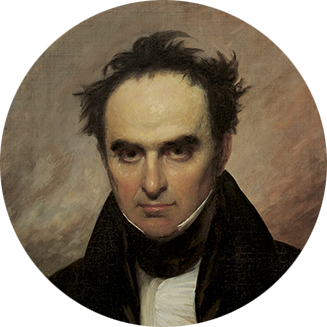
“I still live.”
Daniel Webster, just before his death on October 24, 1852.
And so the famous lawyer, senator and orator does still live: not only in his many legendary speeches, but also in the name of North Tonawanda’s main downtown drag, “Webster Street” (whose drinking establishments, incidentally, the bibulous “Black Dan” would likely have enjoyed very much).
A friend of Stephen White
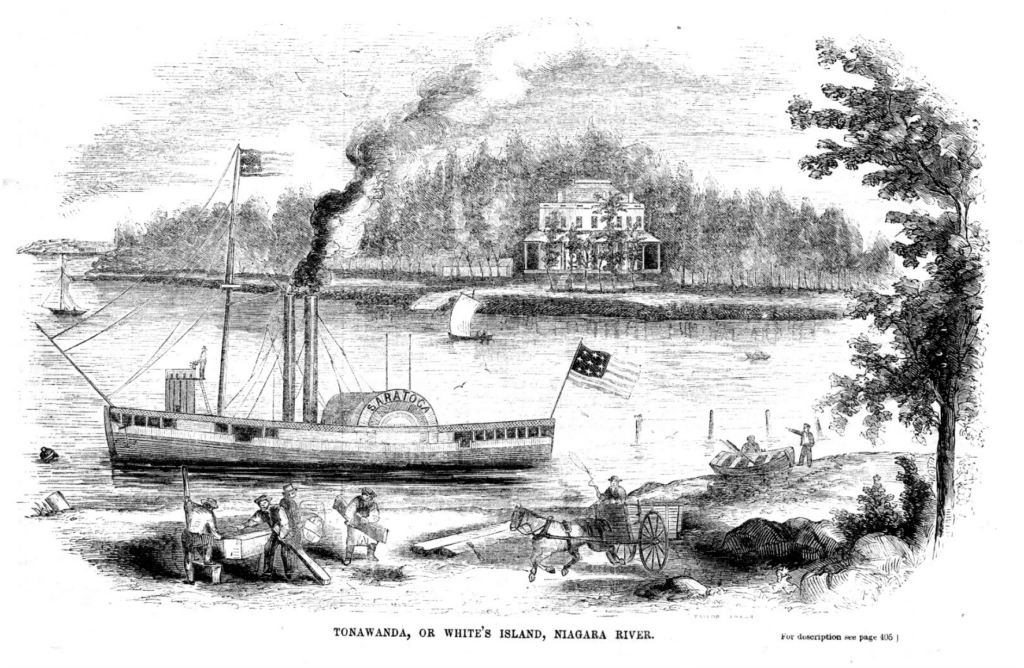
Daniel Webster visits this area several times in the 1830s as the guest of Stephen White, president of the East Boston Timber Company. Back east, Webster prosecuted the murder trial of White’s wealthy uncle, Captain Joseph White. The East Boston Timber Company is in Tonawanda to harvest the magnificent white oak stands of Grand Island and ship them back east on the canal for shipbuilding. White builds himself an impressive mansion on Tonawanda Island, and ferries local magnates and luminaries on and off for entertainments.
Romance also blossoms among the garden paths of the secluded, romantic island: Daniel Webster’s son Fletcher courts Stephen White’s daughter Caroline, and the couple later marry.
A train runs through it
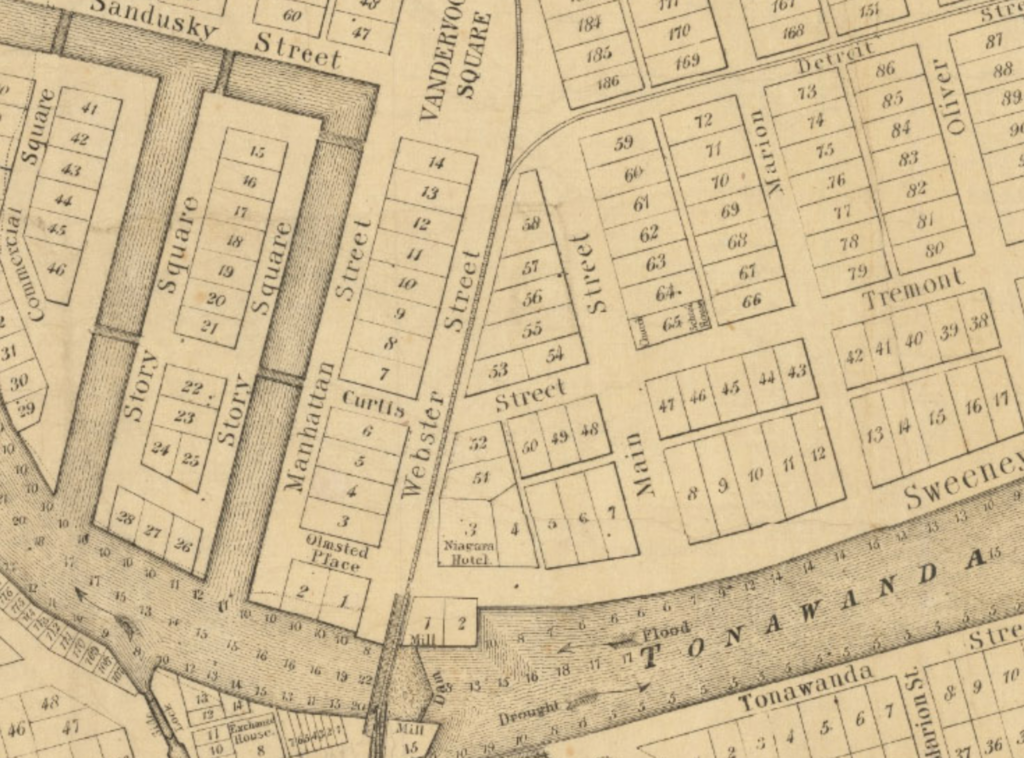
The settlement at Tonawanda is in its infancy when Daniel Webster is honored with his namesake street. In 1836 the tracks of the Buffalo and Niagara Falls Railroad have just been laid on the east side of Webster. A wood-stoked steam locomotive–Erie County’s first–hauls passengers of the Buffalo and Niagara Falls Railroad between the titular city and precipitous natural wonder in about three hours. Just east across the tracks, closer to Sweeney Street, is William Vandervoort’s Niagara Hotel (the village’s first public house and stage coach headquarters from 1827. It will burn in 1844). Just south, Sweeney’s mill operates near the four-foot Tonawanda Creek dam. A few residences and businesses appear along the west side of Webster Street in the following decades, but it won’t be until the 1870s that the North Tonawanda downtown begins to assume the picturesque proportions we are familiar with today.
Postcards and views
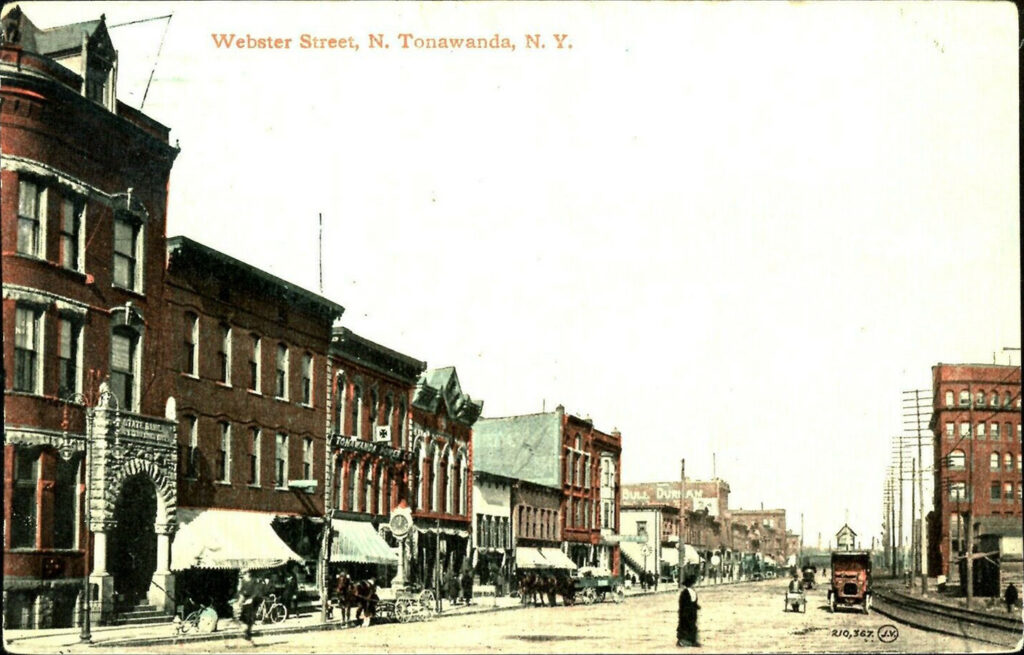
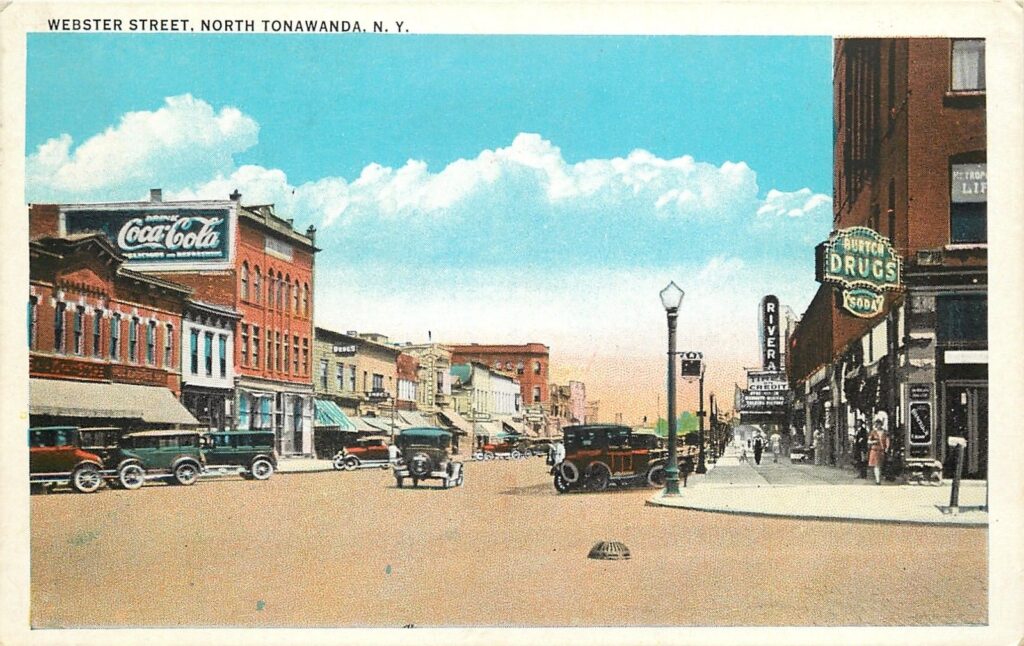
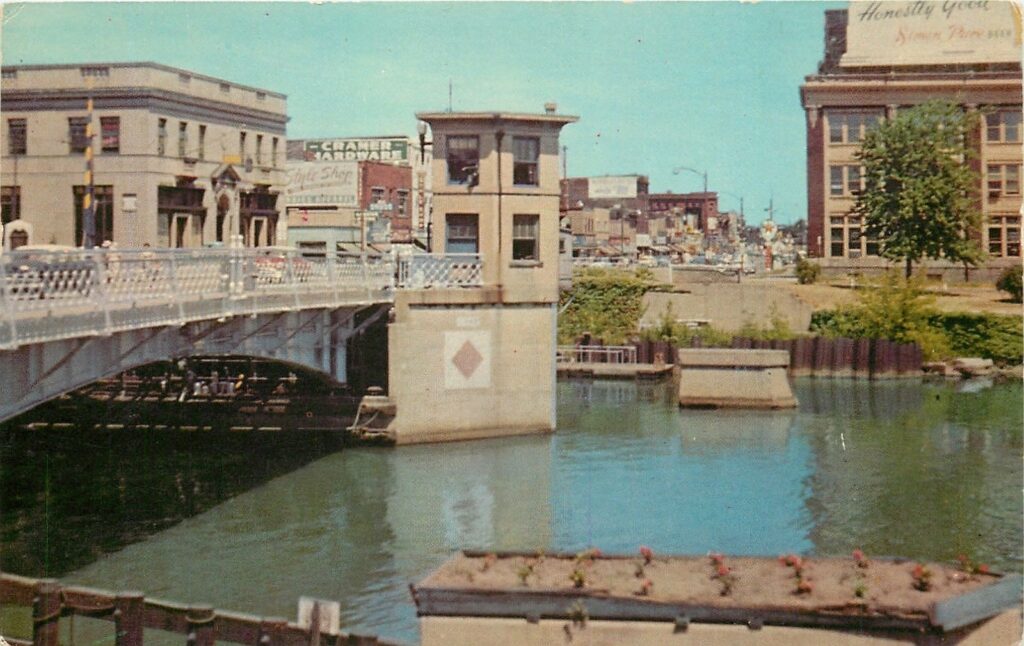
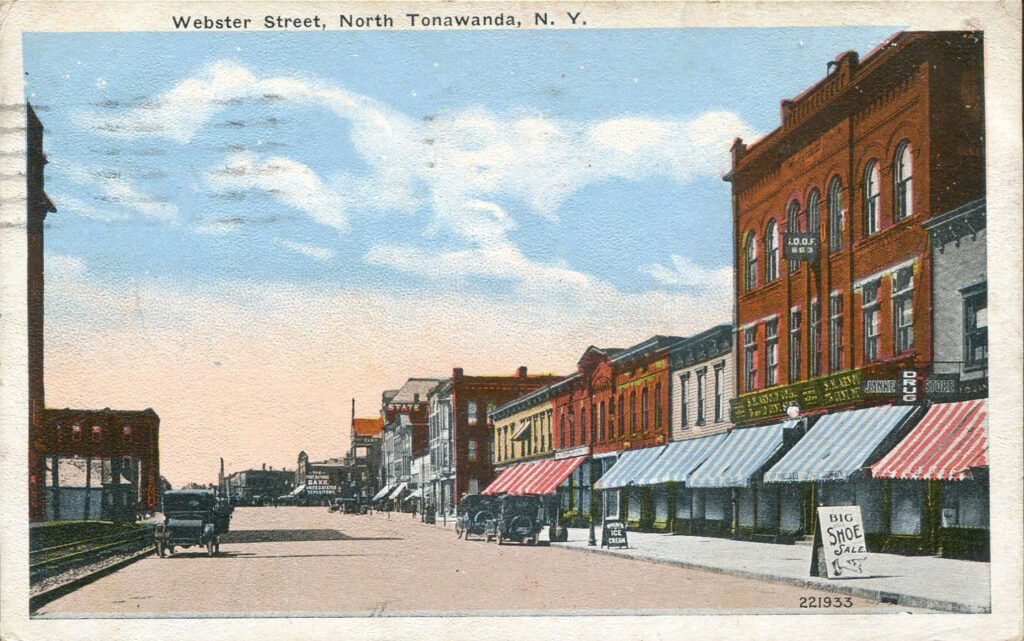

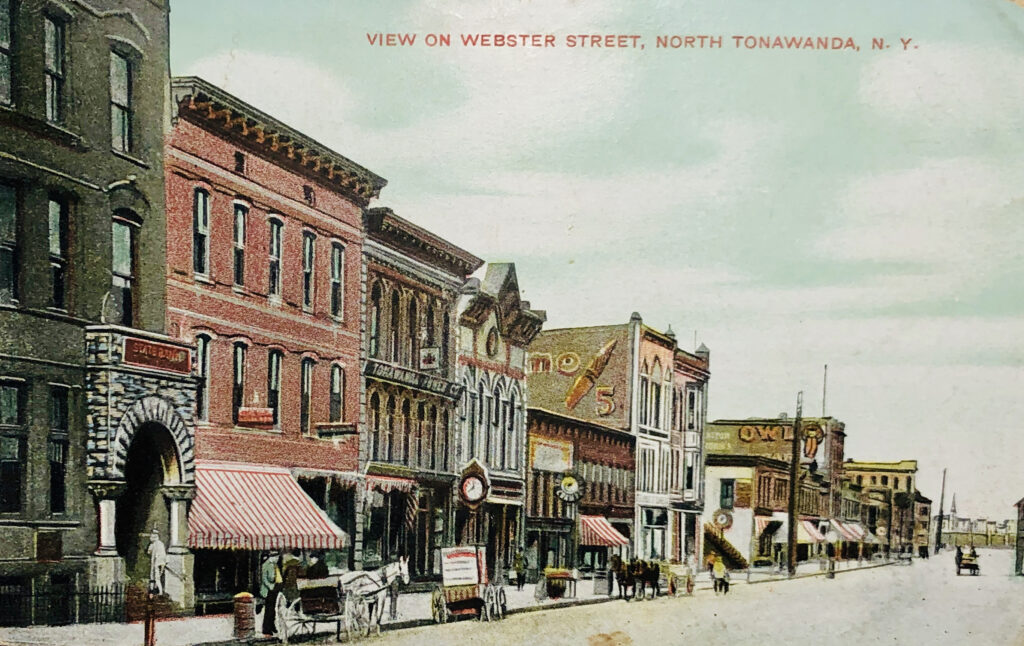

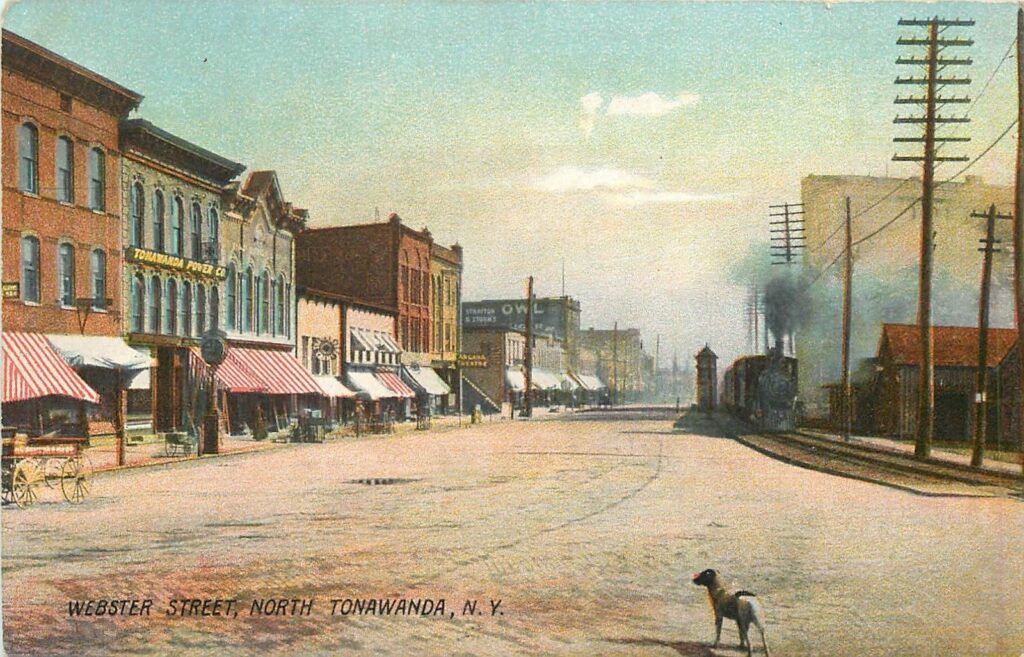


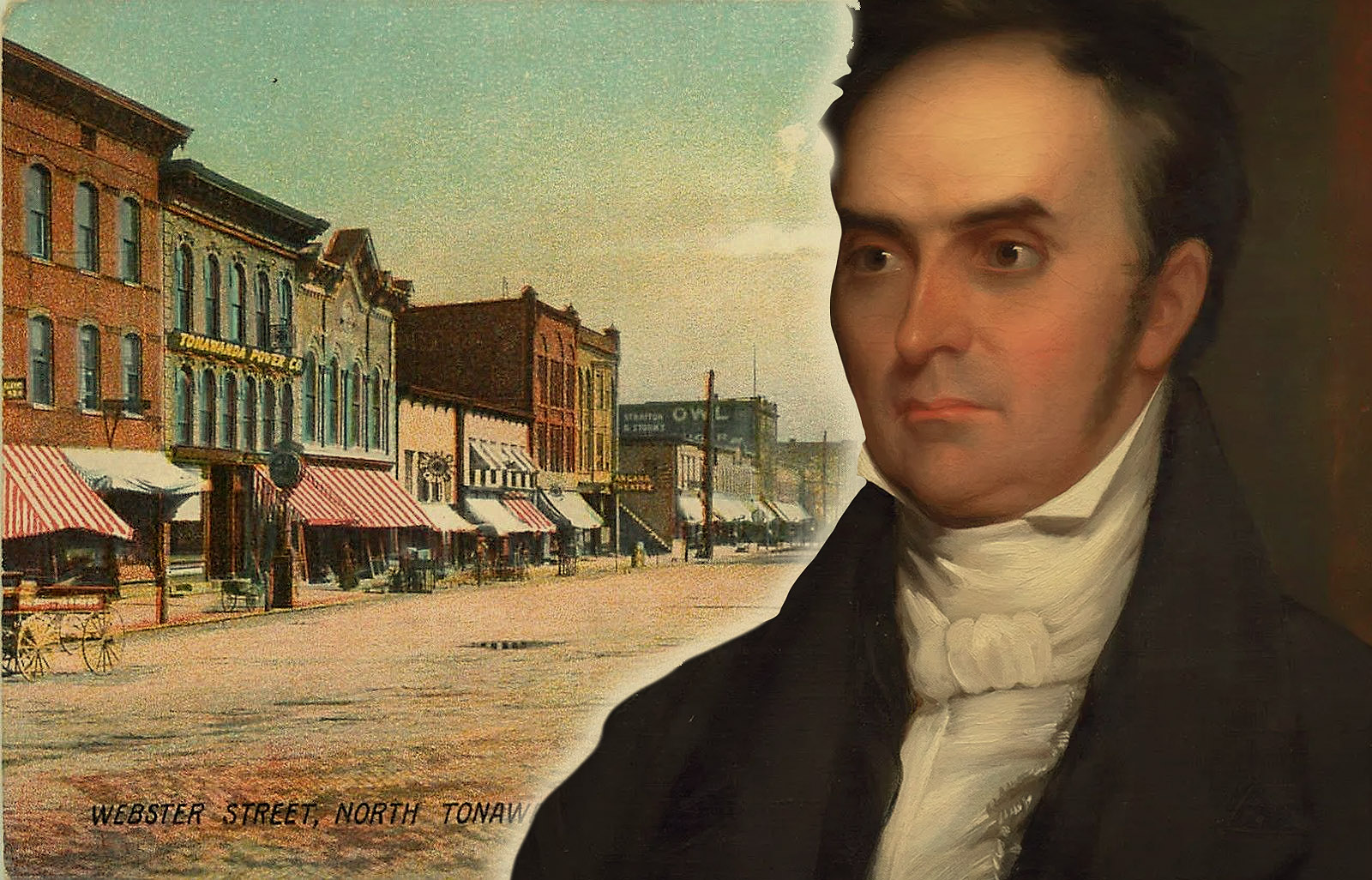
Leave a Reply